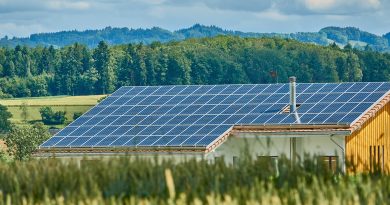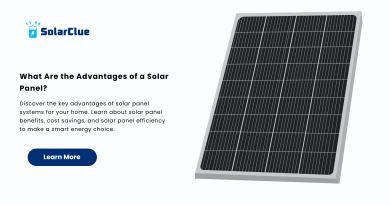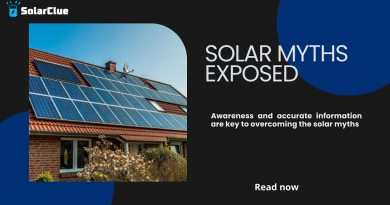how to hook up solar panels to rv batteries
Solar panels offer a sustainable and efficient way to power your RV, providing energy for lights, appliances, and other devices while off-grid. Connecting solar panels to RV batteries involves several components, careful planning, and attention to safety. This guide will walk you through the process, from choosing the right system to wiring and maintaining your battery bank.
Table of Contents
- 1 Choosing the Right Solar Panel System for Your RV
- 2 Mounting Solar Panels on Your RV Roof or Using Portable Panels
- 3 Installing the Charge Controller and Connecting It to Your Battery Bank
- 4 Wiring Solar Panels to the Charge Controller
- 5 Safety Precautions and Troubleshooting Tips
- 6 Battery Bank Management and Maintenance
- 7 Additional Considerations (Inverters, Fuses, Grounding)
- 8 Tips for Maximizing Solar Energy Production in RVs
- 9 Case Studies of Successful Solar Panel Installations in RVs
- 10 Table: Comparing Charge Controllers for RV Solar Systems
- 11 FAQs
- 12 Conclusion
Choosing the Right Solar Panel System for Your RV
1. Determine Your Energy Needs:
- Calculate the total energy consumption of your RV by listing all the devices and their power requirements (in watts).
- Estimate daily energy usage to determine the size of the solar panel system needed.
2. Selecting Solar Panels:
- Monocrystalline Panels: High efficiency, space-saving, but more expensive.
- Polycrystalline Panels: Slightly less efficient but more affordable.
- Portable Panels: Ideal for flexibility and easy setup but less secure than roof-mounted panels.
| Panel Type | Efficiency | Cost | Best For |
|---|---|---|---|
| Monocrystalline | 18-22% | High | Limited roof space, high energy needs |
| Polycrystalline | 15-18% | Medium | Budget-conscious buyers |
| Portable Panels | Varies | Medium | Flexibility, temporary setups |
Mounting Solar Panels on Your RV Roof or Using Portable Panels
1. Roof-Mounted Panels:
- Pros: Permanent installation, less chance of theft, maximizes space.
- Cons: Requires drilling, may need tilting brackets for optimal sunlight exposure.
2. Portable Panels:
- Pros: Flexibility, easy to position for maximum sunlight.
- Cons: Must be set up and taken down frequently, risk of theft or damage.
Steps for Roof-Mounting:
- Measure the Roof Area: Ensure there’s enough space for the number of panels you plan to install.
- Install Mounting Brackets: Secure brackets to the roof, following the manufacturer’s instructions.
- Attach Solar Panels: Mount the panels to the brackets securely.
- Run Wiring: Feed the wiring from the panels through the roof and into the RV.
Installing the Charge Controller and Connecting It to Your Battery Bank
1. Importance of a Charge Controller:
- The charge controller regulates the voltage and current from the solar panels to prevent overcharging the batteries.
2. Types of Charge Controllers:
- PWM (Pulse Width Modulation): More affordable but less efficient.
- MPPT (Maximum Power Point Tracking): Higher efficiency, especially in varying light conditions, but more expensive.
Installation Steps:
- Mount the Charge Controller: Choose a dry, cool location close to the battery bank.
- Connect the Solar Panels: Wire the solar panels to the input terminals of the charge controller.
- Connect the Battery Bank: Wire the battery bank to the output terminals of the charge controller.
Wiring Solar Panels to the Charge Controller
1. Use the Right Gauge Wire:
- The wire gauge must match the current output of the solar panels to avoid overheating.
2. Proper Connections:
- Series Connection: Increases voltage, suitable for long cable runs.
- Parallel Connection: Increases current, keeps voltage the same, ideal for matching the battery bank’s voltage.
Wiring Process:
- Connect Solar Panels in Series or Parallel: Depending on your setup, connect the panels to match the input requirements of the charge controller.
- Run Wires to the Charge Controller: Use appropriate connectors and ensure tight connections.
- Connect to the Charge Controller: Match positive to positive and negative to negative terminals.
Safety Precautions and Troubleshooting Tips
1. Safety Precautions:
- Fuses: Install fuses between the panels, charge controller, and battery bank to protect against short circuits.
- Grounding: Ground the system to protect against electrical faults and lightning strikes.
- Disconnects: Install disconnect switches to safely disconnect the system for maintenance.
2. Troubleshooting Tips:
- Check Connections: Ensure all connections are secure and free of corrosion.
- Monitor Output: Regularly check the output of the solar panels and charge controller for any discrepancies.
- Inspect for Damage: Look for any physical damage to the panels, wiring, or components.
Battery Bank Management and Maintenance
1. Sizing the Battery Bank:
- Choose a battery bank that can store enough energy to meet your daily needs. Consider deep-cycle batteries like AGM or Lithium-ion for RV use.
2. Maintenance Tips:
- Regularly Check Battery Levels: Ensure batteries are fully charged but not overcharged.
- Clean Battery Terminals: Keep terminals clean and free of corrosion.
- Monitor Battery Health: Use a battery monitor to track charge levels and overall health.
Additional Considerations (Inverters, Fuses, Grounding)
1. Inverters:
- Convert DC power from the batteries to AC power for standard household appliances.
- Pure Sine Wave Inverters: Best for sensitive electronics, though more expensive.
- Modified Sine Wave Inverters: Less expensive, suitable for basic appliances.
2. Fuses:
- Install fuses on the positive lines between solar panels, charge controller, and batteries to prevent damage from short circuits.
3. Grounding:
- Properly ground the system to protect against electrical faults and enhance safety.
Tips for Maximizing Solar Energy Production in RVs
- Optimize Panel Placement:
- Position panels to get maximum sunlight throughout the day. Use tilting brackets if necessary.
- Keep Panels Clean:
- Dust and debris can reduce efficiency. Regularly clean the panels with water and a soft cloth.
- Monitor Usage:
- Be mindful of energy consumption. Use energy-efficient appliances and turn off devices when not in use.
Case Studies of Successful Solar Panel Installations in RVs
Case Study 1: Full-Time RV Living
- Setup: 600W solar panel system with a 400Ah lithium battery bank and MPPT charge controller.
- Results: Able to power all essential appliances, including a refrigerator and lights, with minimal reliance on shore power.
Case Study 2: Weekend Warrior
- Setup: 200W portable solar panel system with a 100Ah AGM battery and PWM charge controller.
- Results: Provides enough power for weekend trips, including charging devices and running small appliances.
Table: Comparing Charge Controllers for RV Solar Systems
| Charge Controller Type | Efficiency | Cost | Best For |
|---|---|---|---|
| PWM | 75-80% | Low | Budget-conscious setups |
| MPPT | 95-98% | High | Larger systems, varying light conditions |
FAQs
1. Can I connect solar panels directly to my RV battery?
- It’s not recommended to connect solar panels directly to the battery without a charge controller, as this could overcharge the battery and cause damage.
2. What size solar panel do I need for my RV?
- The size depends on your energy needs. Calculate your daily energy consumption in watt-hours and choose a panel size that can meet those needs.
3. Do I need an inverter for my RV solar system?
- You need an inverter if you plan to run AC appliances. DC devices can be powered directly from the battery bank without an inverter.
4. How do I maintain my RV solar system?
- Regularly clean the panels, check connections, monitor battery health, and ensure the charge controller is functioning correctly.
5. Can I use portable solar panels with my RV?
- Yes, portable panels are a flexible option and can be set up and positioned as needed, though they require more setup effort than roof-mounted panels.
Conclusion
Installing solar panels on your RV can provide a reliable and renewable power source, allowing you to enjoy off-grid adventures with confidence. By carefully selecting the right components, following proper installation procedures, and maintaining your system, you can maximize the efficiency and lifespan of your RV solar setup. Whether you’re a full-time RVer or a weekend warrior, solar power can enhance your freedom on the road.



